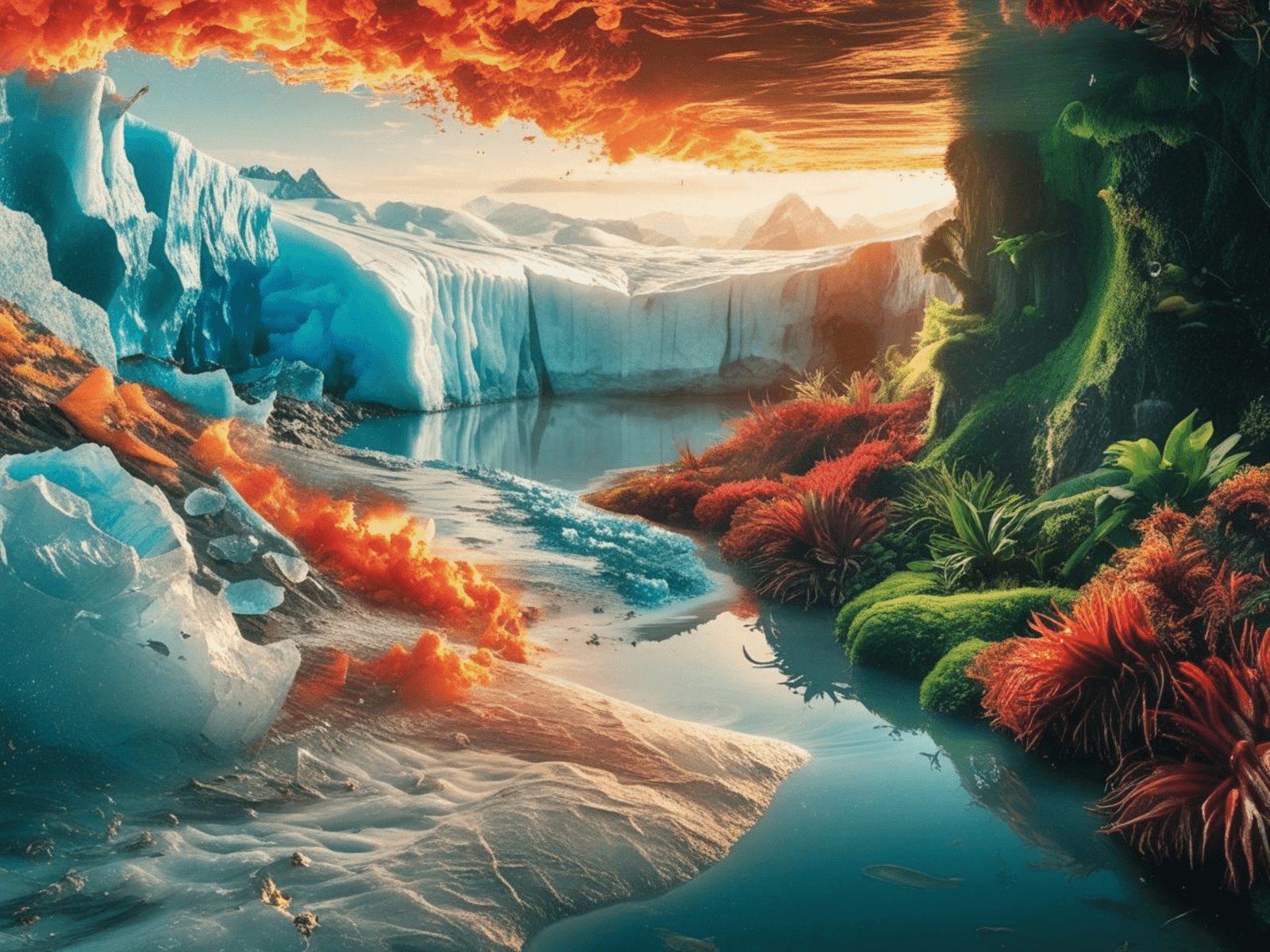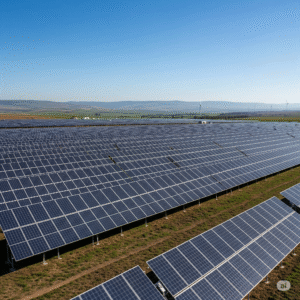Table of Contents
ToggleGlobal Warming and Climate Change: Causes, Impacts, and Solutions
Introduction
Global warming and climate change are among the most pressing challenges humanity faces in the 21st century. These interconnected phenomena threaten ecosystems, economies, and societies across the globe. Over the past century, the Earth’s average temperature has risen significantly, largely due to human activities such as the burning of fossil fuels, deforestation, and industrial processes. This warming has led to observable climate changes, including rising sea levels, shifting weather patterns, more frequent natural disasters, and disruptions to biodiversity.
Addressing global warming and climate change requires urgent collective action from individuals, communities, governments, and international organizations. In this article, we will explore the causes of global warming, the evidence for climate change, its wide-ranging impacts, and potential solutions for building a sustainable future.
Understanding Global Warming
What is Global Warming?
Global warming refers to the long-term rise in Earth’s average surface temperature due to the accumulation of greenhouse gases (GHGs) in the atmosphere. These gases trap heat from the sun, creating a “greenhouse effect” that keeps our planet warm enough to sustain life. However, excessive greenhouse gases, largely produced by human activity, have intensified this effect, leading to abnormal heating of the planet.
Major Greenhouse Gases
Carbon Dioxide (CO₂): The most significant GHG, released mainly by burning fossil fuels such as coal, oil, and natural gas.
Methane (CH₄): Emitted during agricultural activities, livestock farming, and landfills. It is far more potent than CO₂ in the short term.
Nitrous Oxide (N₂O): Produced by fertilizers, industrial processes, and combustion of fossil fuels.
Fluorinated Gases: Synthetic gases used in refrigeration and industrial applications, which have extremely high warming potential.
Human Activities Driving Global Warming
Burning Fossil Fuels: Power generation, transportation, and industrial activities release billions of tons of CO₂ annually.
Deforestation: Cutting down forests reduces the Earth’s ability to absorb CO₂.
Agriculture: Livestock farming and rice paddies emit large amounts of methane.
Industrialization: Cement production, chemical processes, and waste disposal contribute to GHG emissions.
Understanding Climate Change
What is Climate Change?
While global warming refers specifically to rising temperatures, climate change encompasses broader shifts in Earth’s climate system. This includes changes in rainfall patterns, frequency of storms, melting glaciers, droughts, and changes in ecosystems.
Evidence of Climate Change
Rising Temperatures: According to NASA, the last decade has been the warmest in recorded history.
Melting Ice Sheets and Glaciers: Greenland and Antarctica are losing ice mass at alarming rates.
Rising Sea Levels: Thermal expansion of water and melting ice contribute to rising sea levels, threatening coastal communities.
Extreme Weather Events: Increased frequency and intensity of hurricanes, floods, heatwaves, and wildfires are linked to climate change.
Shifts in Ecosystems: Species migration, coral bleaching, and changes in agricultural productivity are already being observed.
Impacts of Global Warming and Climate Change
Environmental Impacts
Loss of Biodiversity: Many species are unable to adapt to rapidly changing conditions, leading to extinction risks.
Melting Polar Regions: Loss of Arctic ice affects global weather patterns and endangers polar ecosystems.
Ocean Acidification: CO₂ absorption by oceans makes waters more acidic, harming marine life such as corals and shellfish.
Desertification: Expanding deserts threaten arable land and food production.
Social Impacts
Health Risks: Heat-related illnesses, respiratory diseases due to air pollution, and the spread of vector-borne diseases like malaria are increasing.
Food Security: Shifts in rainfall patterns and droughts threaten global agriculture and food supplies.
Water Scarcity: Melting glaciers and changing rainfall patterns affect freshwater availability.
Displacement and Migration: Rising seas and extreme weather events force communities to relocate, creating climate refugees.
Economic Impacts
Damage to Infrastructure: Floods, hurricanes, and wildfires destroy homes, businesses, and infrastructure.
Agricultural Losses: Unpredictable weather and pests harm crop yields.
Insurance and Financial Risks: Increasing natural disasters put pressure on global insurance markets.
Global Inequality: Developing nations, which contribute least to emissions, suffer disproportionately from climate impacts.
International Efforts to Combat Climate Change
The Paris Agreement
Adopted in 2015, the Paris Agreement is a landmark international treaty where countries pledged to limit global warming to well below 2°C above pre-industrial levels, aiming for 1.5°C. Each country submits its climate action plan, known as Nationally Determined Contributions (NDCs).
United Nations Framework Convention on Climate Change (UNFCCC)
The UNFCCC provides a platform for nations to collaborate on climate action, holding annual Conference of the Parties (COP) meetings to evaluate progress and strengthen commitments.
Other Global Initiatives
Kyoto Protocol (1997): Earlier treaty focusing on reducing emissions from developed nations.
Intergovernmental Panel on Climate Change (IPCC): Provides scientific assessments on climate change.
Sustainable Development Goals (SDGs): Goal 13 emphasizes urgent action to combat climate change.
Solutions to Global Warming and Climate Change
Transition to Renewable Energy
Shifting from fossil fuels to renewable sources like solar, wind, hydro, and geothermal is crucial. Technological advancements have made renewable energy more affordable and efficient.
Energy Efficiency
Improving efficiency in transportation, buildings, and industries can significantly reduce energy demand and emissions. For example:
Electric vehicles (EVs) replacing fossil fuel cars.
Energy-efficient appliances and smart grids.
Green building designs.
Reforestation and Afforestation
Planting trees and restoring forests enhances carbon sequestration, improves biodiversity, and stabilizes ecosystems.
Sustainable Agriculture
Reducing methane emissions from livestock.
Promoting organic and regenerative farming.
Reducing food waste, which also reduces methane emissions from landfills.
Circular Economy
Encouraging recycling, reusing, and minimizing waste production helps reduce energy use and emissions from production.
Technological Innovations
Carbon Capture and Storage (CCS): Capturing CO₂ emissions from industries and storing them underground.
Geoengineering (controversial): Large-scale interventions like solar radiation management to reflect sunlight away from Earth.
AI and Big Data: Optimizing energy use and predicting climate patterns.
Policy and Governance
Carbon pricing (carbon tax or cap-and-trade systems).
Stricter regulations on emissions.
Incentives for green businesses and technologies.
Role of Individuals
Reducing energy consumption.
Using public transport or carpooling.
Supporting sustainable brands and products.
Raising awareness and demanding climate action from leaders.
Challenges in Addressing Climate Change
Despite progress, significant challenges remain:
Political Differences: Some nations prioritize short-term economic growth over climate goals.
Economic Constraints: Transitioning to renewable energy requires significant investment.
Public Awareness: In many regions, climate literacy is low, leading to insufficient action.
Global Inequality: Poorer countries often lack resources for adaptation and mitigation.
The Future of Climate Action
The future depends on the actions we take today. If emissions continue unchecked, scientists predict catastrophic impacts by the end of the century, including extreme heat, massive biodiversity loss, and widespread displacement of populations. However, with strong international cooperation, technological innovations, and grassroots movements, it is still possible to slow down and even reverse some of the damage.
Young activists, such as Greta Thunberg, have highlighted the urgency of action, inspiring global climate strikes and movements. Governments and businesses are increasingly adopting net-zero emission targets by 2050, signaling a shift toward sustainability.
Conclusion
Global warming and climate change are not distant threats—they are realities we are already experiencing. The scientific evidence is overwhelming, and the consequences are dire. However, humanity has the knowledge, technology, and capacity to mitigate these challenges. What is required is collective willpower, bold policies, and sustained individual action.
The fight against climate change is not just about preserving the environment; it is about ensuring a livable planet for future generations. Every decision we make today—whether it is switching to renewable energy, reducing waste, or supporting green policies—contributes to shaping a sustainable tomorrow.
The choice is clear: act now or face a future marked by irreversible damage. The time for action is not tomorrow, but today.



